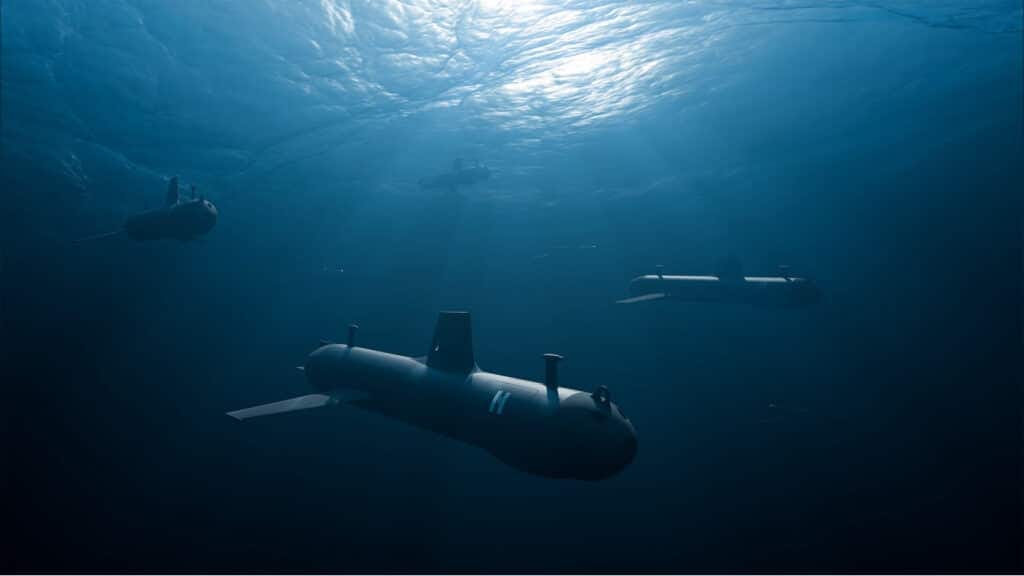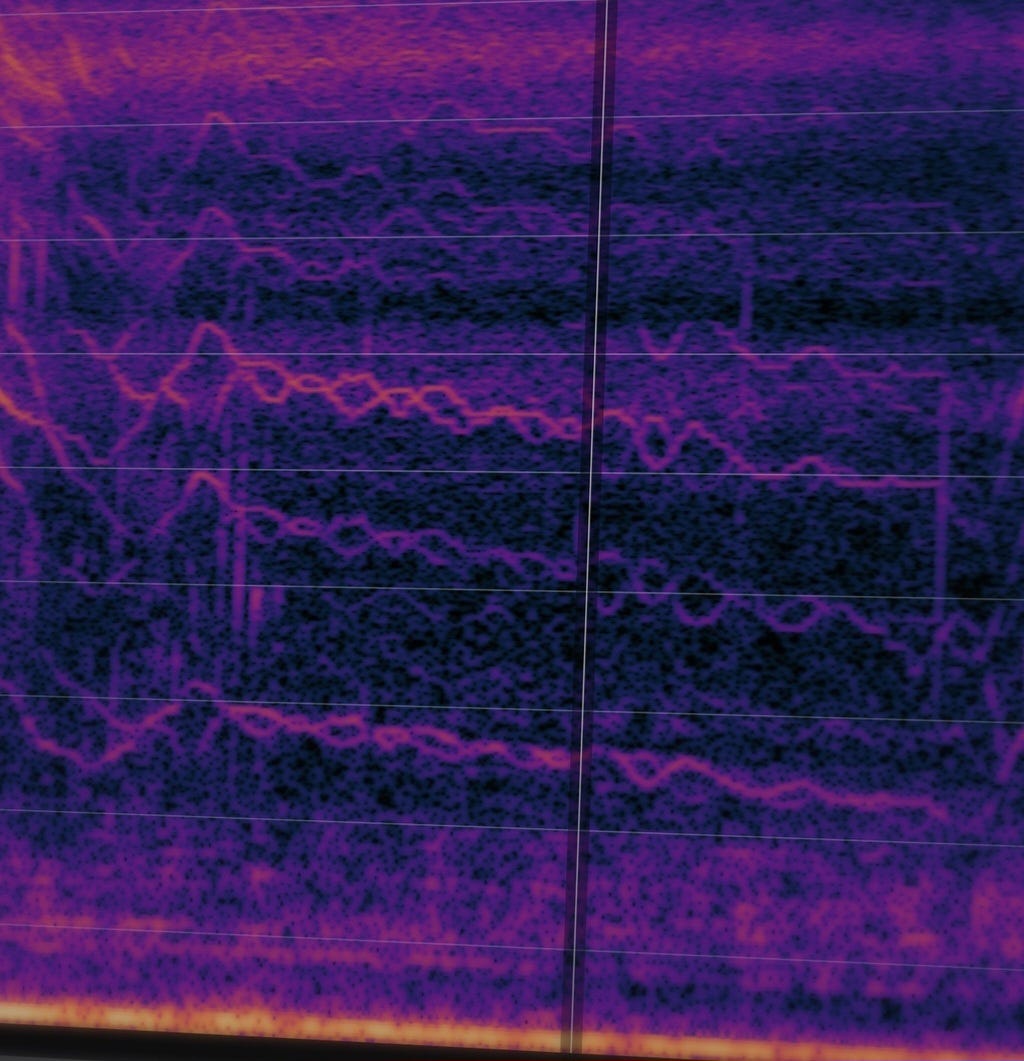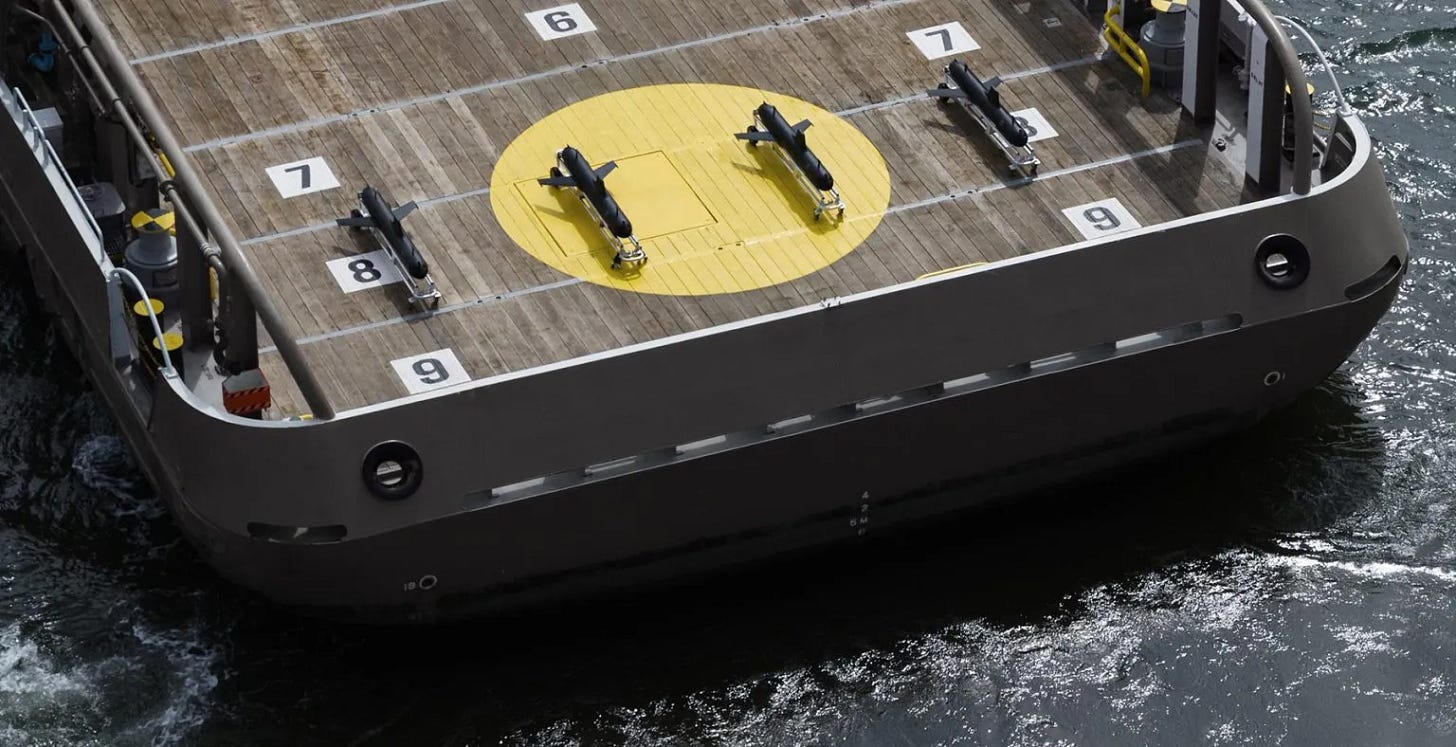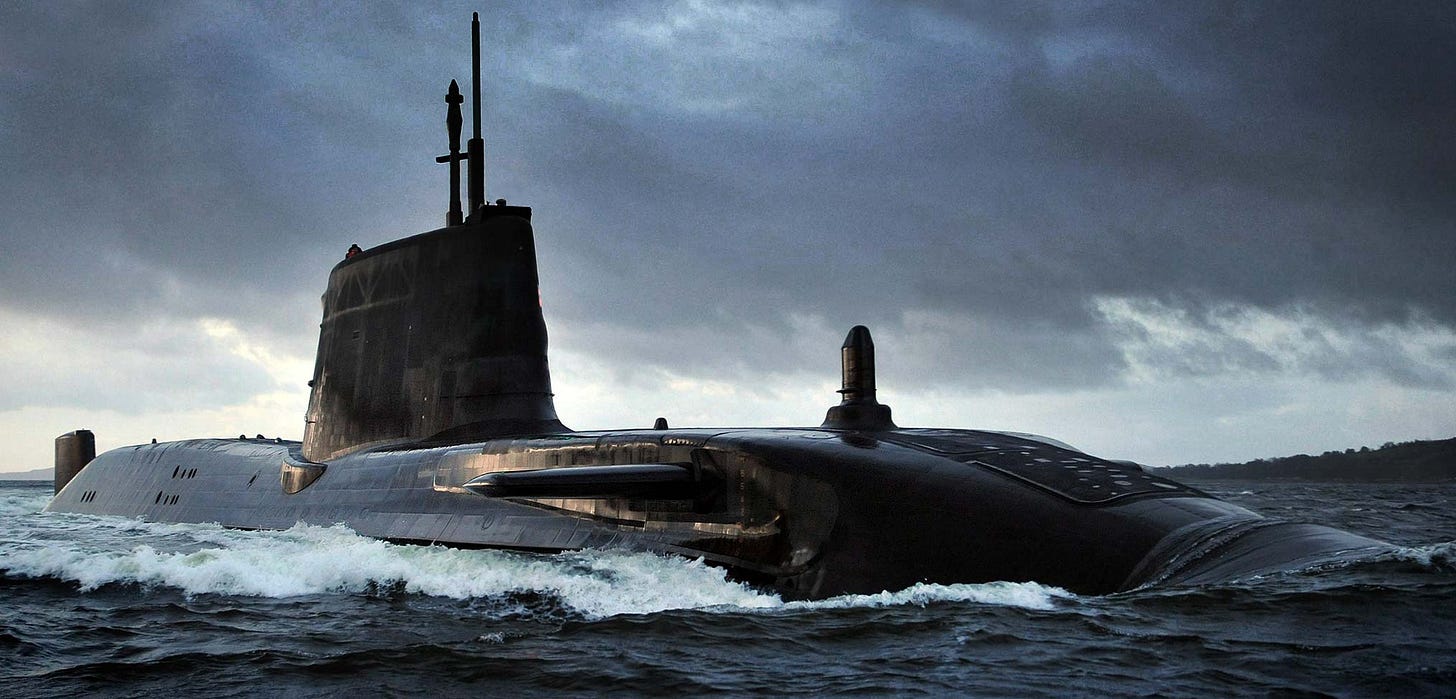The ocean is vast, implacable and lethal. Most of it is unknowable inky blackness, so how can we pierce the veil of a realm we know less about than the surface of the moon? Particularly when we're looking for killers in the deep.
The cutting-edge German defence company Helsing is working on a pretty good answer to that question, which may yet be bought by the Royal Navy and others to patrol and monitor sprawling territorial waters that conventional ships have trouble covering.
For under the waves are skulking Russian nuclear submarines. Now you see them, now you don't…
Their answer is the SG-1 ‘Fathom’, a cheap autonomous subsea drone that can be mass produced and deployed in potentially huge numbers, to patrol in vast underwater constellations, listening for weird sounds. The drones then report to ‘Lura’, an AI trained in acoustic analysis of the undersea realm.
Good name: Lura is a modern derivation of Lorelei, a German name associated with the myth of a beautiful maiden who would lure sailors to their doom with her haunting song.
Lura, then, will hunt for submarines, and will do it with the SG-1, an undersea drone with an unusual design that catches my imagination.
For the SG-1 is a buoyancy glider, probably the quietest and most efficient means of transport that exists. A perfect subsea hunter.
Buoyancy gliders can cover thousands of miles on almost no energy at all. They work by varying their buoyancy by evacuating seawater with pistons, allowing oil to move in & out of expandable bladders or exploiting tropical thermoclines. As they rise, or sink, they translate this vertical motion to horizontal through hydroplanes. No propellors, no motors, no pumps or any other noisy system that would give the game away. Even attitude control can be managed by slowly moving ballast inside the gliders to change the centre of gravity, while navigation is achieved by passive means: Magnetic compass, inertial guidance, pressure & attitude sensors, re-calibrated by GPS whenever it gets near the surface.
They're slow, travelling at between one and three knots.
They're relentless, with many months of mission duration and thousands of miles of range.
They can run deep, with 1000 metres to 6000 metres commonplace, far below the worst ocean currents.
They are cheap. Very cheap!
A week ago, Ukraine showed us what a hundred drones and a lot of forward planning can do, as a hundred miniature robot killers rose in coordinated swarms from shipping containers across Russia to flock over airbases and strike Russia’s huge fleet of strategic bombers and heavy air assets. A trillion roubles of upgraded Soviet relics, kneecapped by explosive insects, with footage of burning bombers beamed around the world.
It was a hell of a feat, but the buoyancy glider is the nautical equivalent. Their prey, nuclear attack submarines, are technological triumphs: Fleet killers, billions of dollars a unit, capable of deep strikes and subterfuge anywhere in the world, fast moving and almost undetectable.
Almost.
Helsing claims that the SG-1, when partnered with the Lura AI model, can turn over acoustic data 40 times faster than human operators and is not just capable of identifying vessels by class, but distinguishing individual vessels within a class by acoustic signature alone.
If this is true, then the destabilising effect of drones on the land may be about to replicate itself below the waves.
Buoyancy gliders like the SG-1 are no match for a nuclear submarine, which could just outpace them without breaking a sweat, but we're not talking about individual gliders, but hundreds or thousands of them.
Cheap, autonomous, flocking and coordinated, enhanced by artificial intelligence; you could fill the oceans with constellations of these listeners in the dark. Do this, and their lack of speed or ordinance becomes a moot point, just so long as they can track submarines.
A nuclear submarine is a terrible threat but only if you don't know if it's there. Pull the curtain away, give exact coordinates, and you’ve removed its biggest asset and turned it into seven thousand tons of tempting target.
Along with everything else that moves in the abyss.
Don't thrash or move too swiftly. The sea has ears, and Lura the temptress is out there waiting for you, inviting sailors to their doom.
Come on in, boys. The water's fine…
Killer bubbles
If the loudest animal on Earth is the sperm whale, a giant squid killing deep sea monster, what is the second loudest?










